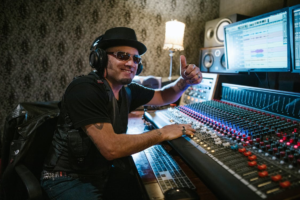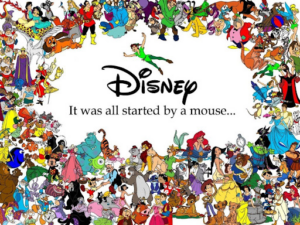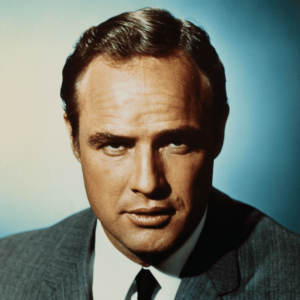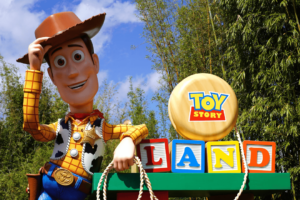If you’re interested in pursuing a career in film, you can find many opportunities both in front of the camera and behind it. There are many different roles in this industry, and this list breaks down some of the different departments that make up various careers in film:
- Performance and Acting
- Production Department
- Camera Department
- Sound and Music
- Lighting Department
- Makeup, Costume, and Props
- Art Department
Within these departments are specific roles that you can pursue if you’re interested in them.
Performance and Acting
The main talent in a film is usually what the majority of individuals recognize when they watch a film or other production. In this department, there are people in front of the camera and behind:
- Main cast members, like actors, portray the characters in films. If you choose to pursue a career as an actor, you’ll work on things like researching character traits, memorizing scripts, and developing an emotional and mental connection to the character to successfully bring that persona to life on screen.
- Background cast members typically portray non-speaking parts and add to the overall feel of the production. They may also be referred to as “extras.”
- Body doubles fill in for the main actors to portray characters in stunts and other scenes as well as stand in for them during scene blocking with the director and other camera crew.
- Stunt coordinators manage the stunt actors, choreograph stunt sequences, and train actors to perform stunts.
- Casting director: The casting director screens, holds auditions, and hires all talent for production.
- Casting assistant: Casting assistants help the casting directors screen talent and hire actors for the production.
Production Department
Here are some career paths within the production department:
- Film directors are the leaders of the production in general, but they often instruct actors during scenes and collaborate with camera operators and cinematographers on shot composition among many other responsibilities.
- The first assistant director works with the director to create an efficient shooting schedule for a film project. They also help manage schedules for the actors, crews, and necessary equipment for each day of shooting.
- The second assistant director works with the first assistant director to plan and create call sheets for each day of shooting. These professionals also help oversee the talent’s schedules, crew’s schedules, and equipment setup schedules that are needed for each day of shooting.
- The production assistant typically takes on a variety of general tasks that production supervisors and team leaders need. They might set up tables and rest areas or run errands, and they ensure everyone on set is in communication with one another.
- Production designers work with directors to establish the design and overall visuals and themes of a film. They oversee the use of costumes, landscapes, props, and other scenery that reflects the story.
- The locations department includes roles like the location manager and location scouts who find and set up the key locations of filming.
- Producers are responsible for the business aspects of the filmmaking process. They often help screenwriters plan and develop scripts, find ways to finance the film, and hire movie crews.
- Screenwriters write a film’s screenplay, which involves organizing ideas according to the running time of the film and creating character dialogue.
- In the transportation department, captains and transportation drivers help move actors, production staff, and others to and from filming locations.
If you have experience in production, not only is it a lucrative career and pays well, but you can always find a production job where you can use your talents. Check out these jobs in Los Angeles that can help you get your foot in the door working in the film industry.
Camera Department
Since filmmaking requires the use of a camera, entire camera departments are made up of different roles that relate to the operation of cameras, managing shots, and maintaining filming equipment.
- Cinematographers bring the visuals of a film together through all stages of production: Pre-production, principal photography, and post-production. They’ll create and choose the lighting, the color palettes, and the camera movements and shots that will fulfill the theme and story of the film.
- The first camera assistant recommends camera setups to help the director and cinematographer compose shots. They also oversee measuring and focusing during the actual filming and run tests on camera equipment.
- Second camera assistants keep reports on camera angles, lens usage, and other camera settings to ensure consistent shooting. They also make sure the slate is updated for every take and that the information matches the content being filmed.
- Camera operators capture the various scenes of a film during production and operate a variety of technical film equipment, including portable, electronic, and remote-controlled cameras.
- Videographers shoot behind-the-scenes of a film to document and highlight the processes used.
- Film editors handle video editing, clipping, and any of the film rendering necessary during post-production.
Sound and Music
The sound department encompasses many different roles that work together to bring the dialogue, sound effects, music, and other audio of a film to life. Here are several key roles in this department:
- Sound mixers oversee all of the sounds and audio that is recorded during film production.
- Sound designers oversee the creative approaches to sound and nuances of sound within a film.
- ADR mixers manage the correction processes during post-production for any problematic dialogue and sound captured during production.
- Foley artists create sound effects like footsteps, creaking floors, rain, and other noise to accompany the footage.
- Foley engineers set up and manage the sound equipment and microphones to record the sound effects that foley artists record during film production.
Lighting Department
There are many roles within the lighting department, however, these two roles take on the majority of the decision-making when it comes to movie lights:
- The gaffer is essentially the head of the lighting department and will work through the first two stages of production to help create the cinematic visuals of the film through lighting setup.
- The key grip oversees the hiring of lighting and rigging crews for film production and makes sure the film sets are built safely.
Makeup, Costume, and Props
In order for characters to truly come alive onscreen, the makeup and costume departments add their touch to pre-production and filming. Several jobs in this sector include:
- Makeup artists work with all types of performers in many different genres of film to create natural looks, period looks, and special effects.
- Hairstylists assist makeup artists, costume designers, and stylists to create authentic character looks, usually with a performer’s natural hair, wigs, extensions, and even special effects materials.
- Costume designers develop and create costumes used in a film. They’ll also work with stylists to come up with the best designs to fit both character and actor.
- Wardrobe stylists help performers dress for each scene in production and keep costumes in order and ready for the actors’ transitions from scene to scene.
- Prop masters oversee and organize all props that are featured in a film.
- Food stylists prepare food-related props for production alongside assistant food stylists and craft services.
Art Department
Art departments are in charge of bringing animated and graphically created scenes to life.
- Art directors oversee the construction and design of a film set and usually work hand-in-hand with the production designer to create the visuals and feel of a film.
- Construction coordinators supervise the building and fabrication of different sets needed for a film. They also oversee the budgeting and purchasing of set materials.
- Storyboard artists create sketches and drawings to depict the visual timeline of the scenes in a film.
- Effects technician directors work with special effects to make the action, setting, and other features in a film more authentic.
- Another role in special effects is the compositor, who is a computer programmer that creates textures and layers for film images in order to make it look more realistic.
For even more jobs on a film set that you can pursue, check out this list. Just from this list of various careers in film, you should have a deeper understanding of what the film and entertainment industry can offer in terms of jobs. If you’re looking to study a specific field in filmmaking but aren’t quite sure where to start, get in touch with the admissions staff at NFI for further details about a rewarding career in film.















